Industrial Trends: Commercial Automatic Touchless Soap Dispensers
A technical AEC-focused analysis of how automatic touchless soap dispensers impact hygiene performance, smart-building integration, lifecycle cost, and specification practice in modern commercial washrooms.
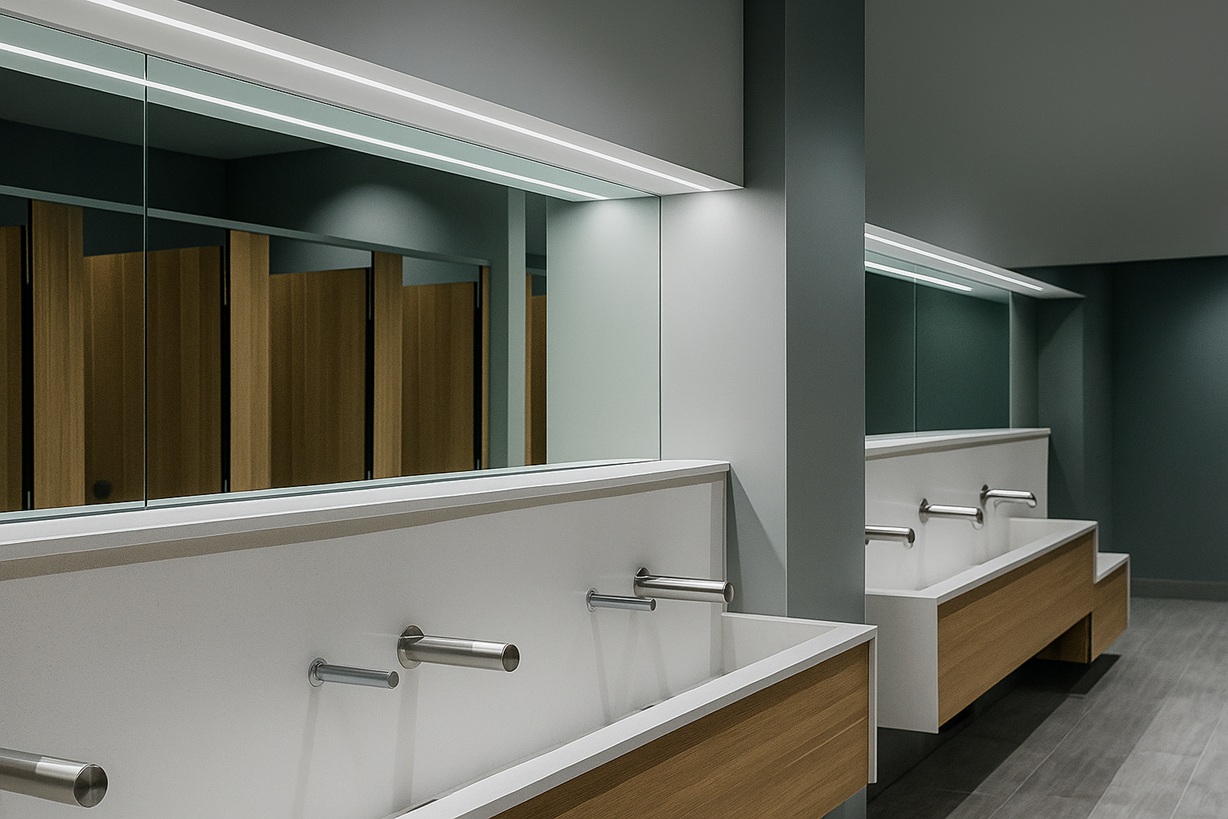
In the AEC (architecture, engineering, construction) sector, commercial washrooms have shifted from functional, afterthought spaces to mission-critical hygiene zones that influence health outcomes, user experience, and facility lifecycle performance. As a result, commercial automatic touchless soap dispensers have become a core component of modern restroom programming, specification, and compliance.
This article outlines current industrial trends shaping these devices from an AEC-grade technical perspective, covering hygiene drivers, connected technology, material durability, sustainability, and specification criteria, supported by verifiable research sources. All sources appear as hoverable buttons that open in new tabs.
Market signals and hygiene priorities
The worldwide market for touchless soap dispensers is expanding consistently. Market researchers report a 2024 global market valuation of approximately USD 0.26 billion, with a projection to reach approximately USD 0.68 billion by 2033, representing a compound annual growth rate near 11.3 percent over the forecast period.
The surge in adoption is driven by several converging needs in commercial environments. There is a clear requirement to reduce cross-contamination through touch-free fixtures. Facility owners and operators also seek improved compliance with hygiene and infection-control standards, streamlined maintenance workflows for high-traffic washrooms, and a shift toward smart restroom ecosystems where dispensers, faucets, dryers, and occupancy sensors operate as a coordinated system.
For AEC professionals, this behavior translates to treating touchless soap dispensers as essential fixtures rather than optional accessories. The devices are particularly critical in healthcare, hospitality, retail, food service, transit hubs, airports, and educational facilities where throughput, accreditation, and experience metrics are tightly managed.
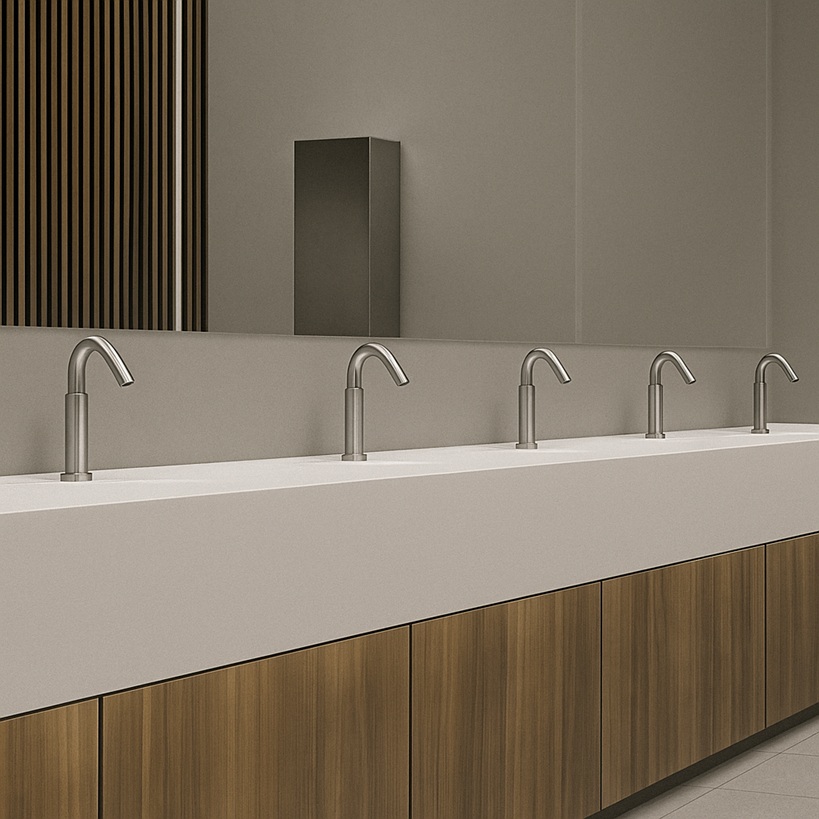
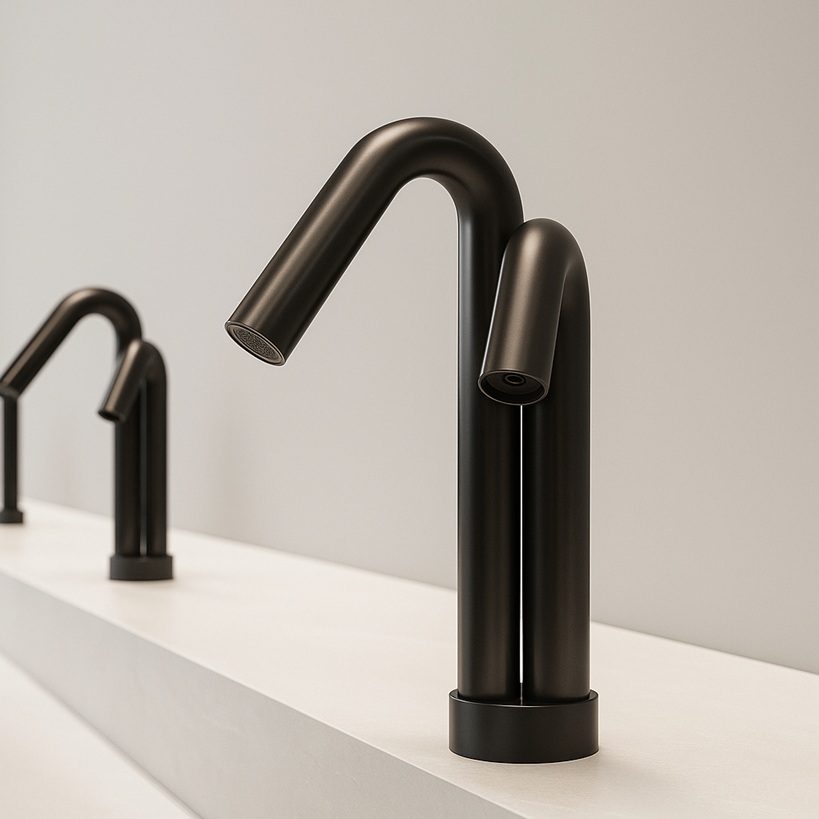
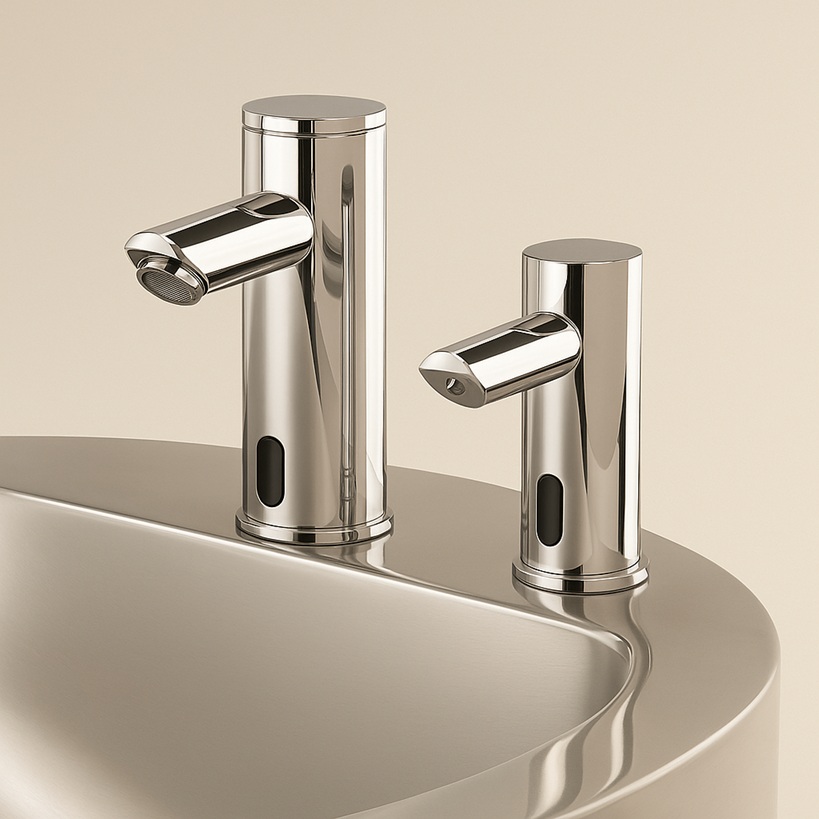
Performance, connectivity, and fluid control
Touchless soap dispensers continue advancing in precision, stability, and integration capability. From an AEC standpoint, the most relevant developments fall into three areas: sensor advancements, smart building connectivity, and fluid control efficiency.
Sensor advancements
Many current units deploy infrared, radar, or hybrid sensors that minimize missed activations and false triggers. Response latency is shrinking below three-tenths of a second in numerous commercial-grade models, helping to keep user experience smooth and predictable. Multi-spectrum sensing approaches also improve performance under challenging conditions such as bright lighting, steam, or reflective surfaces.
Smart building connectivity
Connectivity and data capture are increasingly standard. Common capabilities include usage tracking that supports preventive maintenance, refill-level alerts routed to computerized maintenance management systems and building management systems, logging of dispense counts for hygiene reporting, and predictive analytics built from observed user flow patterns. These features allow soap dispensers to contribute directly to facility management dashboards.
Fluid control and efficiency
Fluid control hardware is also improving. Many dispensers now support adjustable dosing ranges in the half-milliliter to two-milliliter band, with valve configurations that can be tuned for either foam or liquid product. Pump modules are often rated for one hundred thousand to two hundred thousand cycles, which aligns well with high-traffic commercial deployment.
In combination, these developments help AEC specifying teams rely on consistent performance in busy zones while still aligning fixtures with sustainability and maintenance objectives.
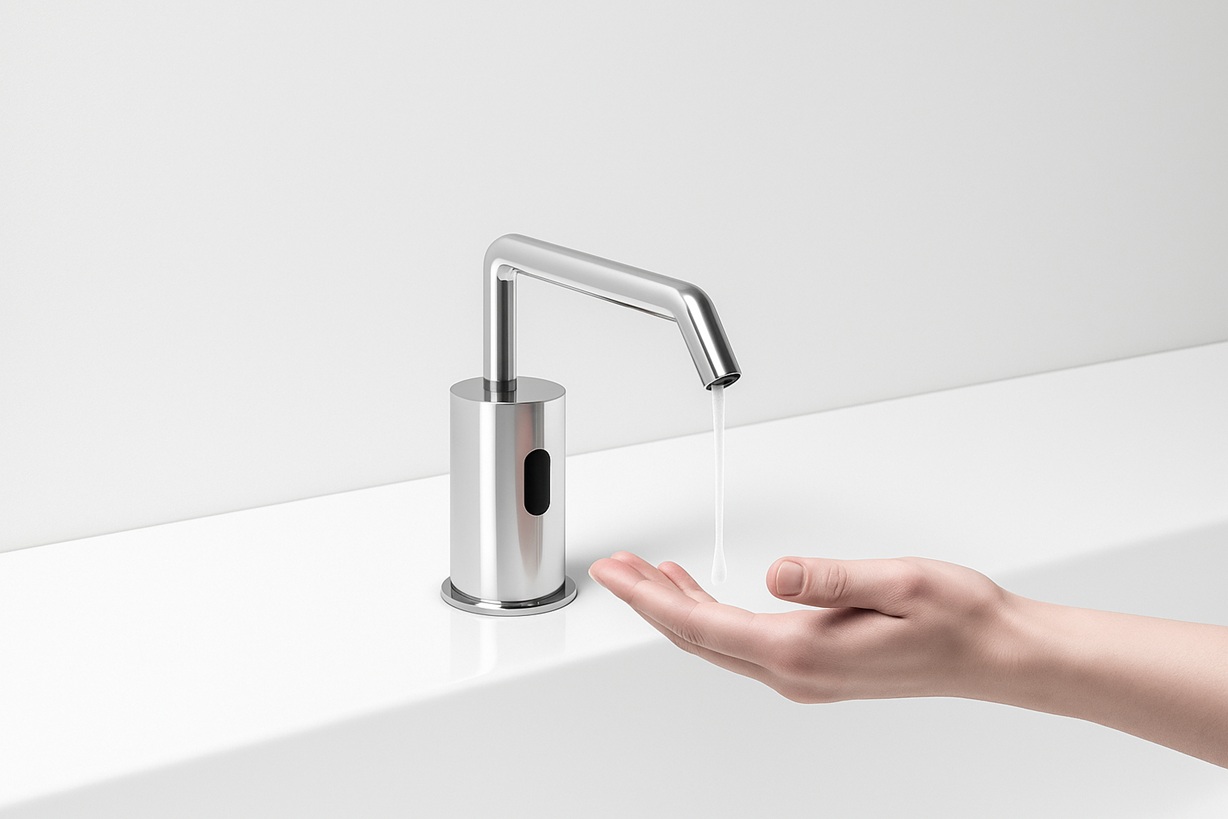
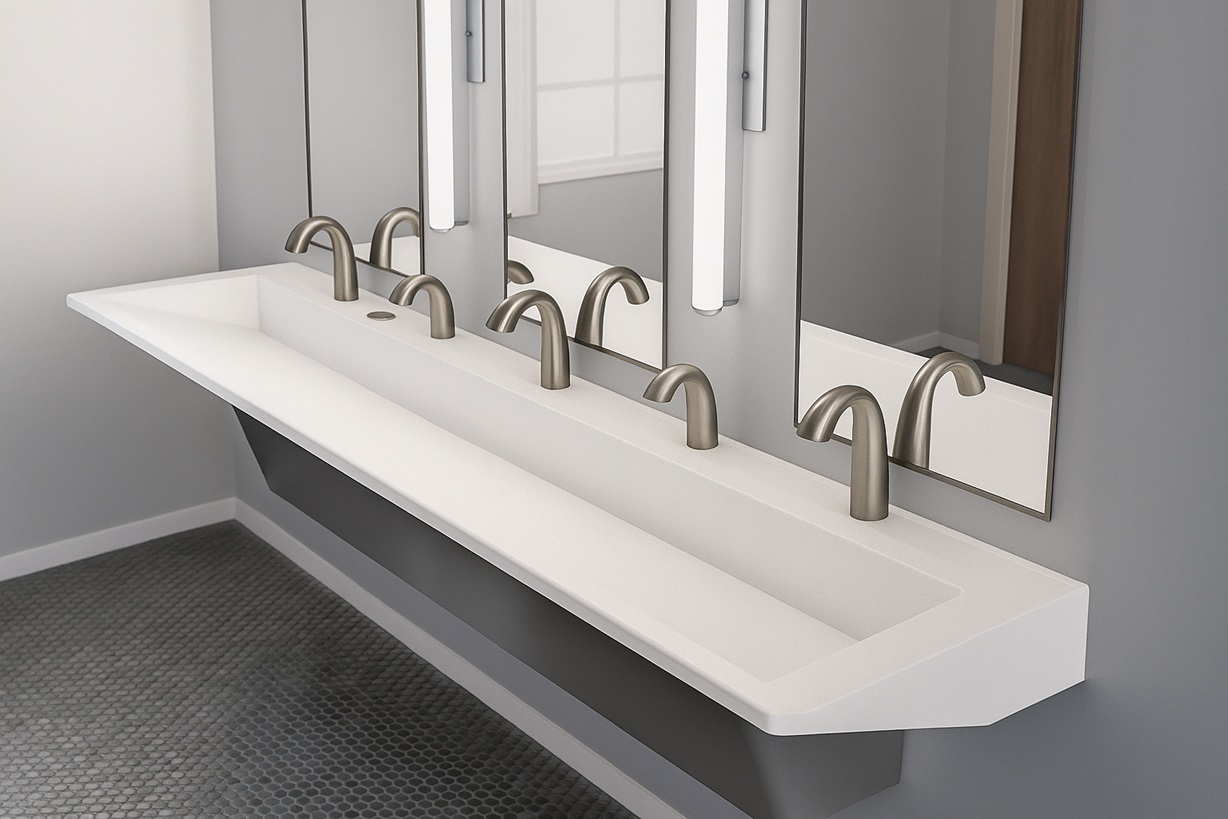
High-volume sectors and design timing
Market data indicates that commercial sectors now dominate installation volumes for automatic touchless soap dispensers, representing well over sixty percent of deployments. Healthcare environments adopt these fixtures to support strict infection control and accreditation standards. Hospitality brands use them to reinforce guest perception and hygiene scores. Corporate offices integrate them as part of wellness programs and smart-facility retrofits.
Transportation hubs, including airports and major transit centers, deploy touchless dispensers to cope with extremely high throughput and frequent cleaning cycles. Educational facilities often prioritize cost-efficient, vandal-resistant models that can withstand intensive daily use while maintaining hygiene baselines.
For architects and engineers, this pattern reinforces the need to initiate dispenser specification early in design development rather than deferring decisions to late-stage procurement. Soap dispensers influence wall rough-ins, backing plates, wiring and power strategies, maintenance clearances, and even circulation patterns around the handwashing zone.
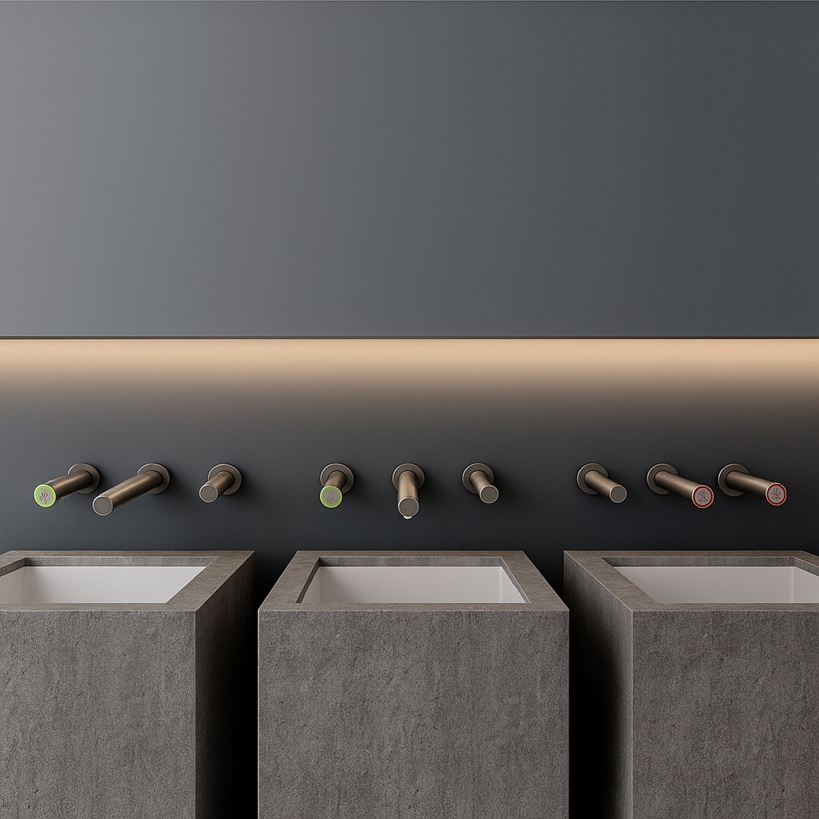
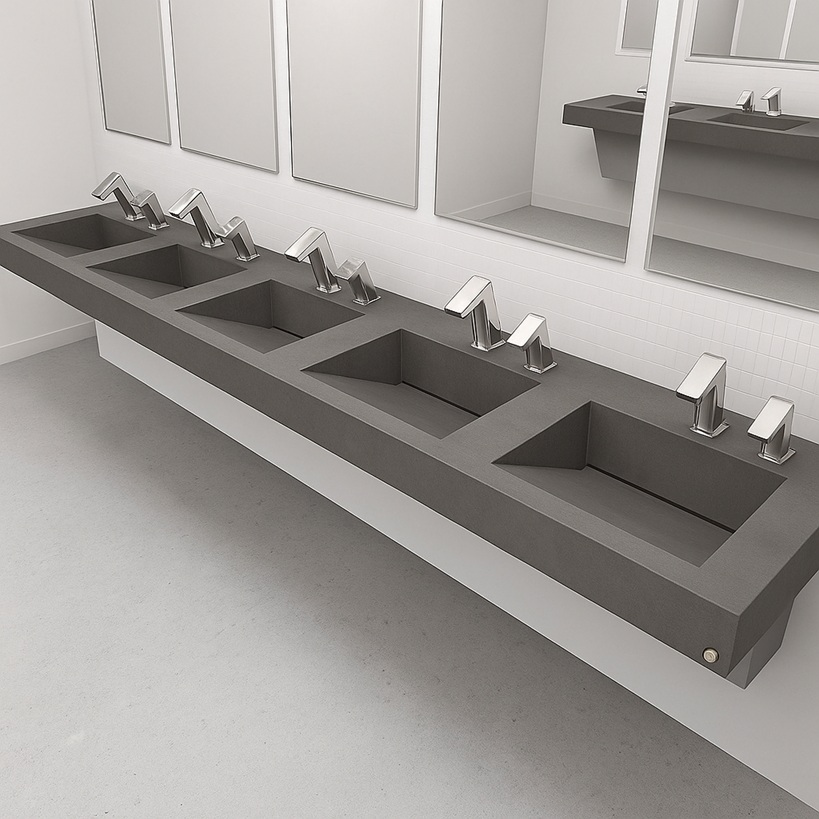

Resource efficiency and long-term operation
Key sustainability trends
Sustainability imperatives now influence both product design and specification language. Larger refill capacities in the range of one thousand to fifteen hundred milliliters reduce maintenance frequency and site labor. Refillable cartridge formats help reduce plastic waste by avoiding single-use containers. Stainless steel housings in grades three hundred four or three hundred sixteen support long service life and recyclability at end of use.
Many systems also use low-waste dosing strategies. Foam-based dispensing can reduce soap consumption by roughly forty to seventy percent compared with traditional liquid dosing, which materially impacts operating cost and waste generation.
Lifecycle considerations
A well-selected dispenser reduces total cost of ownership. Lower soap usage lowers recurring consumable expense. Predictive maintenance capabilities minimize downtime and user complaints. Connected devices reduce unnecessary labor hours by focusing staff only where refill or servicing is actually required. Robust housings and internal components extend the replacement cycle and reduce waste from premature failure.
For AEC teams drafting Section 10 28 00 Toilet Accessories specifications, lifecycle assessment should appear alongside functional and aesthetic criteria to align with owner sustainability goals.
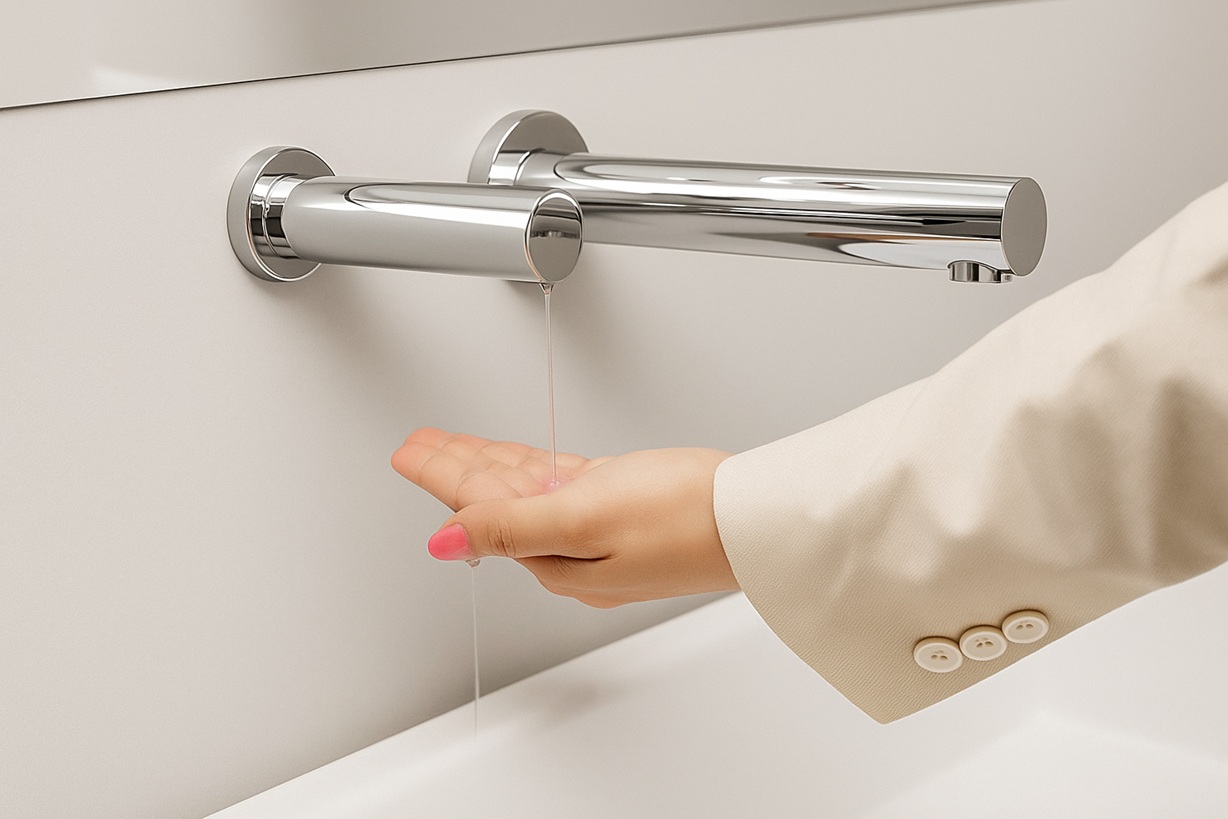

Aligning fixtures with AEC aesthetics and coordination
Restroom design trends favor cohesion, minimalism, and reduced visual clutter. Touchless dispensers follow this direction through slim wall-mounted and deck-mounted profiles, coordinated finish options such as brushed nickel, matte black, stainless, and PVD colors, and recessed niches that improve tamper resistance and clean sightlines. Many product families now integrate with mirror systems and faucet lines to create a unified visual language.
Architects are encouraged to coordinate dispenser placement with accessibility reach ranges, circulation paths in front of the handwashing zone, mirror and faucet alignment, and service access routes behind or below the fixtures. Sensor performance can also be impacted by nearby reflective metals or intense directed lighting, so sensor interference zones should be considered in coordination meetings.
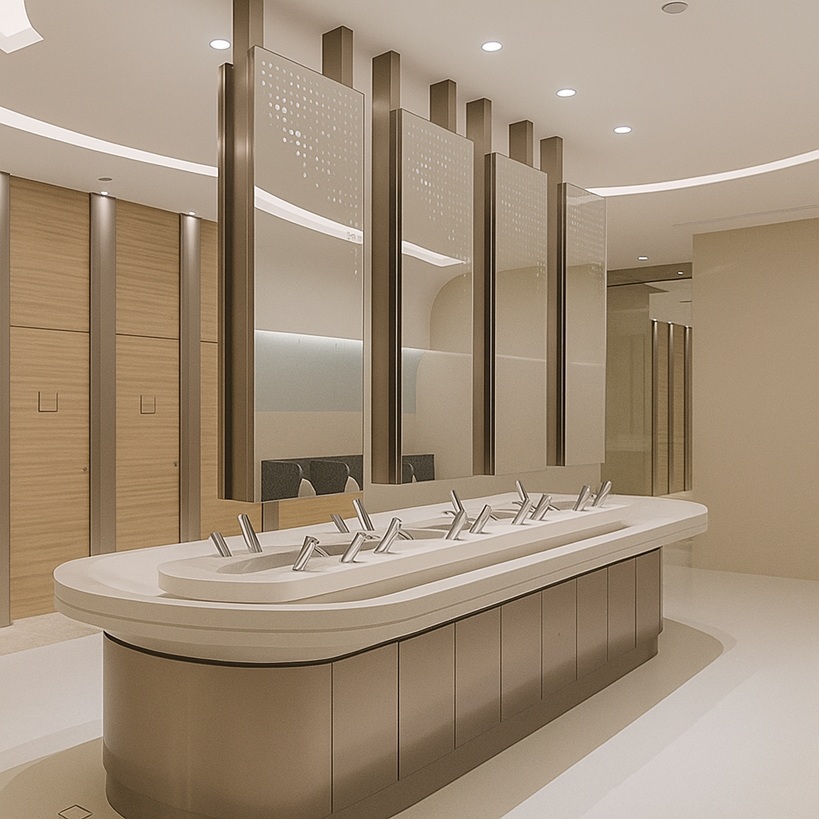
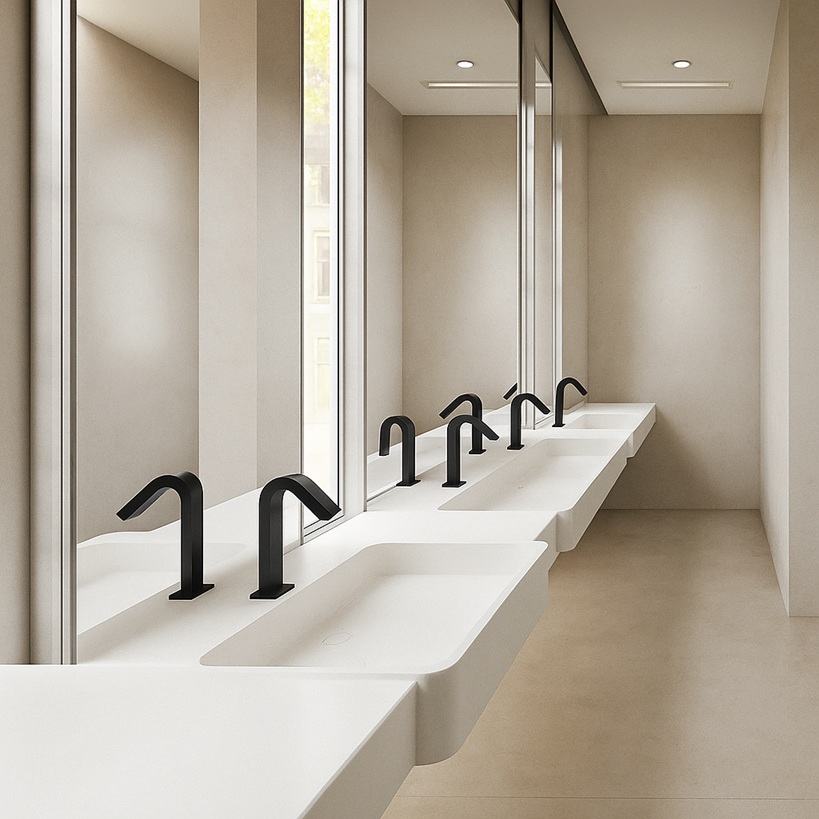
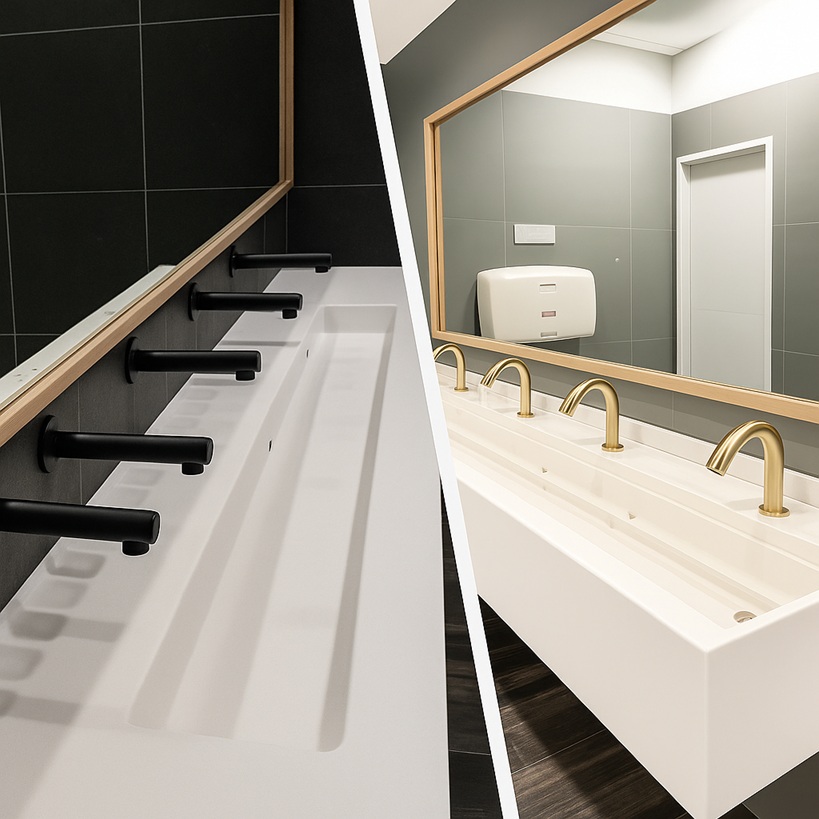
Key content for Section 10 28 00 Toilet Accessories
A complete technical specification for a commercial touchless soap dispenser should capture functional behavior, performance metrics, materials, installation conditions, smart integration, compliance references, and warranty expectations. The following structure aligns with MasterFormat conventions while staying practical for project teams.
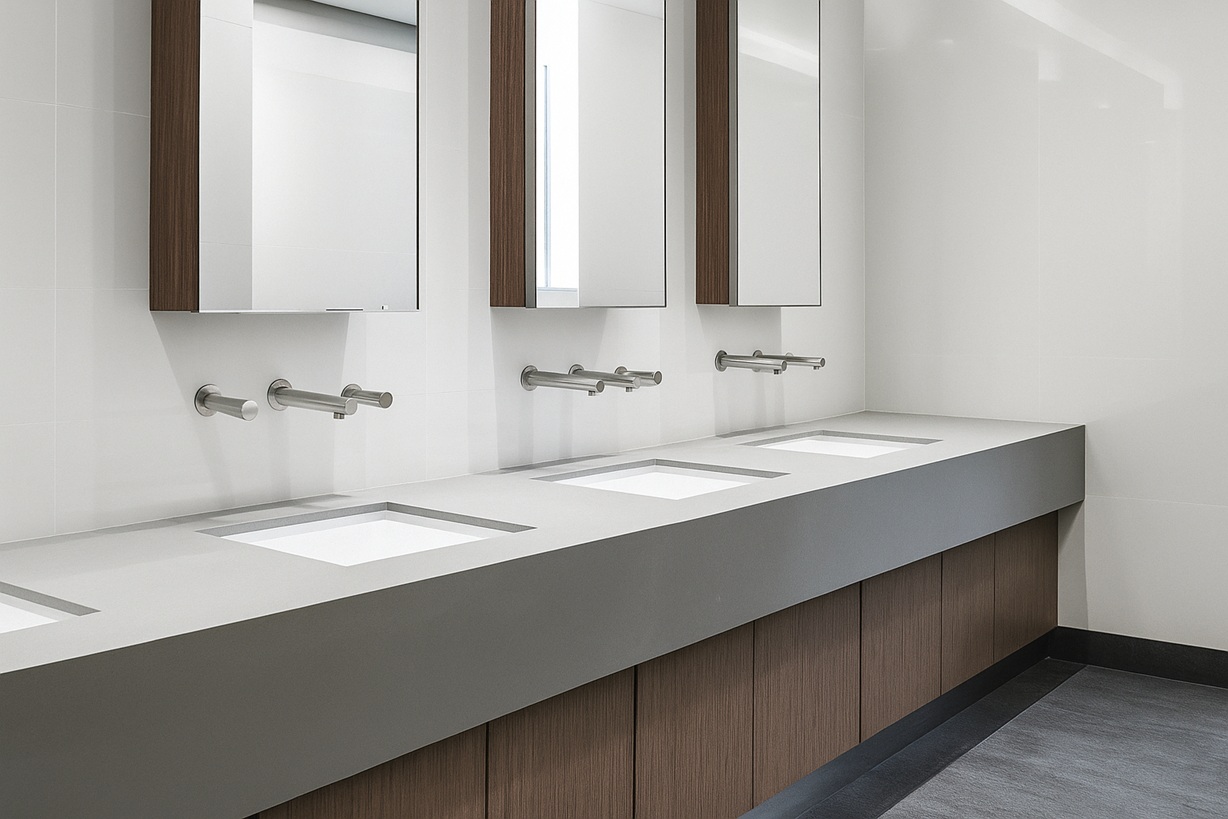
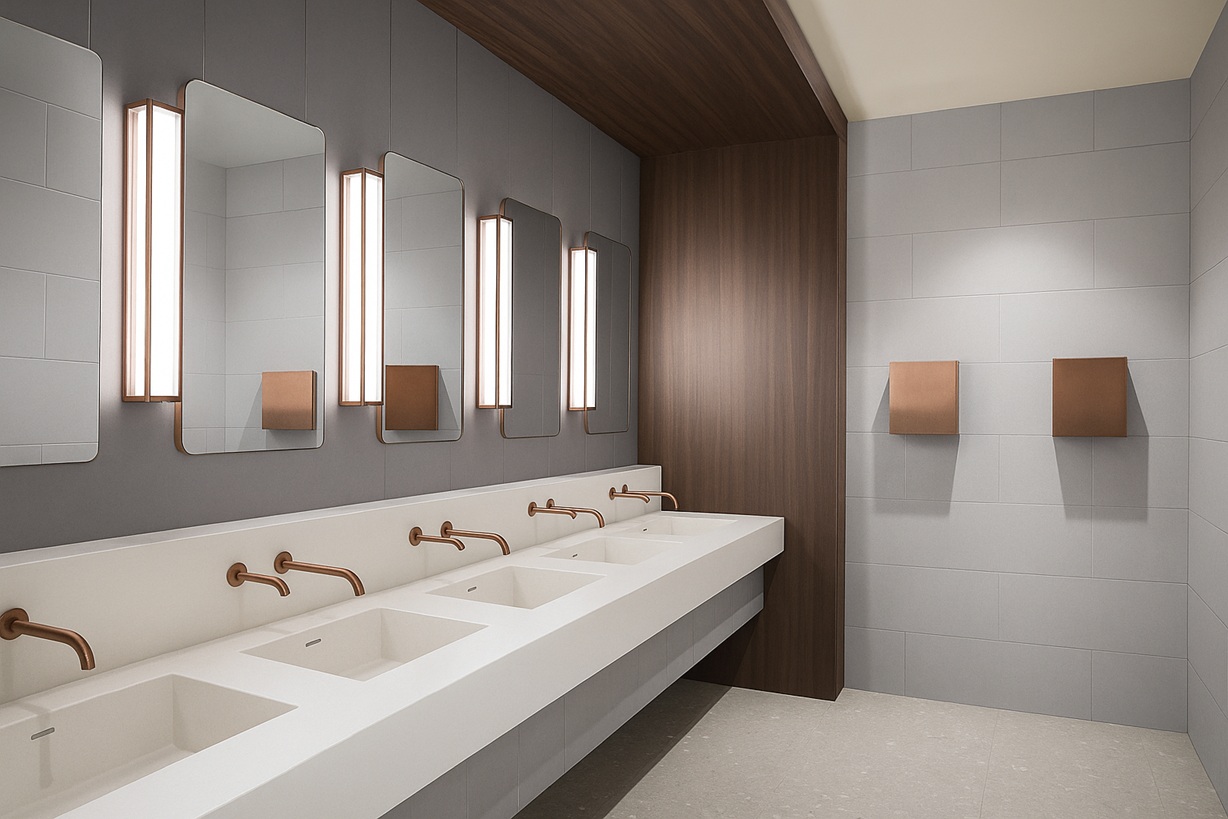
From fixtures to data-generating infrastructure
Over the next five to seven years, several developments are likely to reshape how AEC teams think about touchless soap dispensers. IoT-native dispensers will become standard in larger facilities. Machine-learning models will predict demand for refills and service based on observed usage. High-efficiency foam-generation systems will continue to reduce chemical and water waste.
Modular sensor upgrade kits are expected to extend product lifespan by allowing sensor technology to evolve without replacing the entire housing. Antimicrobial alloys and surface treatments will see wider adoption in high-risk environments. Many projects will move toward fully integrated touchless ecosystems that link faucet, soap, dryer, and occupancy sensing into unified systems that inform building analytics.
As these changes take hold, dispensers will no longer be treated as isolated accessories. They will function as instruments feeding real-time data into digital facility twins, capital planning models, and ESG reporting frameworks.

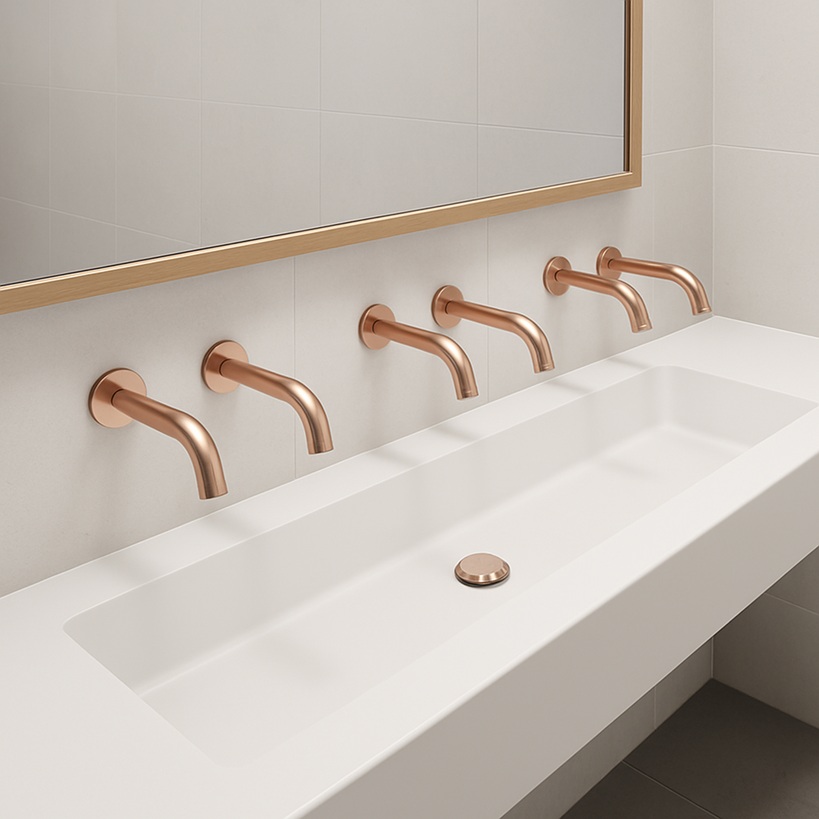
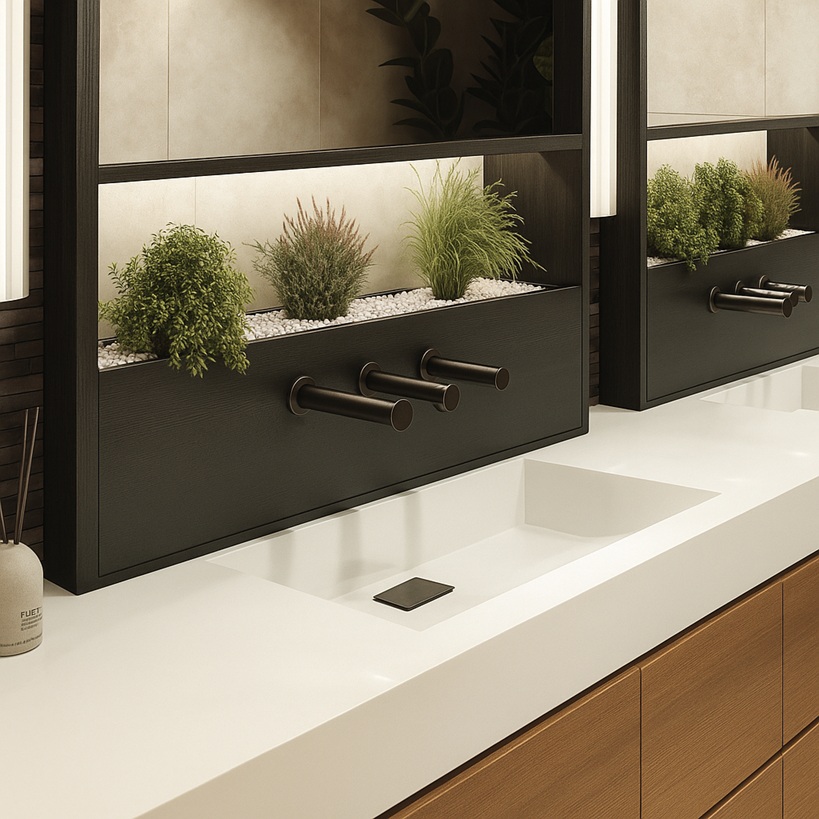
Conclusion
Commercial automatic touchless soap dispensers have become critical components of building hygiene strategies. Their influence now extends across AEC, facility management, and interior design disciplines. Improvements in sensing technology, connectivity, durability, and sustainability allow these fixtures to contribute directly to operational efficiency, occupant wellness, and lifecycle optimization.
For architects, engineers, and specifiers, early coordination and thorough technical documentation remain essential. When dispensers are integrated into programming, detailing, and specification at the right stage, commercial washrooms deliver both performance and long-term value.
